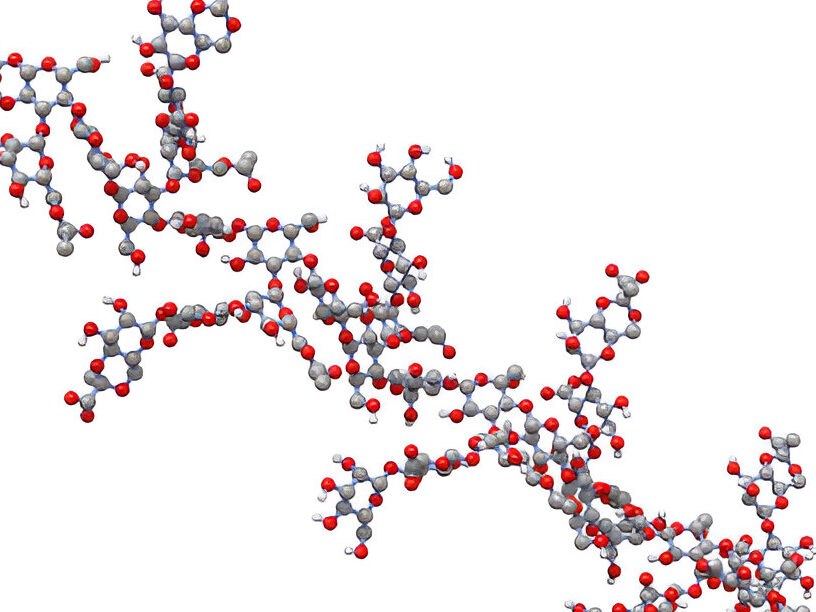Xanthan Gum vs. Guar Gum: Full Comparison 2025
When it comes to food additives, hydrocolloids like guar and xanthan derivatives play a crucial role in enhancing texture and stability. Both are widely used in the food industry for their thickening and stabilizing properties.
The debate between using guar gum or xanthan gum has been ongoing, with each having its unique advantages and disadvantages. Understanding the differences between them is essential for manufacturers to make informed decisions.
This article aims to provide a comprehensive comparison of guar gum and xanthan gum, exploring their respective benefits and drawbacks. By examining their properties and applications, we can better understand which is more suitable for specific uses.
What Are Guar Gum and Xanthan Gum?
In the realm of food processing, guar gum and xanthan gum stand out as versatile additives. These two substances are widely used in the food industry for their unique properties and functionalities.
Definition and Basic Properties
Guar gum is derived from the guar bean, while xanthan gum is produced through bacterial fermentation. Both are complex carbohydrates, known as polysaccharides, which have the ability to thicken and stabilize aqueous solutions. Guar gum is particularly known for its high viscosity at low concentrations, making it an effective thickening agent.
Role as Food Additives and Stabilizers
Guar gum and xanthan gum serve multiple roles in food products, including thickening, stabilizing, and emulsifying. They help improve the texture and consistency of foods, such as sauces, dressings, and baked goods. Xanthan gum is particularly effective in creating a stable suspension and is often used in salad dressings and beverages.
Origins and Production Methods
The origins and production methods of guar gum and xanthan gum reveal their unique characteristics. Understanding these differences is essential for selecting the appropriate gum for various applications.
Guar Gum: Plant-Based Source from Guar Beans

Guar gum is derived from the guar bean, a legume native to India and Pakistan. The gum is extracted from the guar bean’s endosperm through a process involving roasting, differential attrition, and sieving. This plant-based production method results in a gum that is rich in galactomannans, contributing to its thickening properties.
Xanthan Gum: Bacterial Fermentation Process

Xanthan gum is produced through a bacterial fermentation process involving the bacterium Xanthomonas campestris. The bacteria are fed glucose or sucrose, and the resulting broth is pasteurized and then precipitated with alcohol to produce xanthan gum. This fermentation process yields a gum with unique rheological properties, making it suitable for a wide range of applications.
Guar Gum vs Xanthan Gum: Key Differences

To make an informed decision between guar gum and xanthan gum, it’s essential to examine their differences. Both are widely used as thickening agents and stabilizers in food products, but they exhibit distinct characteristics that make them more or less suitable for specific applications.
Chemical Structure and Viscosity Comparison
Guar gum and xanthan gum have different chemical structures, which affect their performance. Guar gum is a galactomannan derived from the guar bean, with a higher molecular weight and more branching, resulting in higher viscosity at lower concentrations. Xanthan gum, produced through bacterial fermentation, has a more rigid structure, providing stability across a wider range of temperatures and pH levels. The viscosity of guar gum solutions is generally higher than that of xanthan gum at the same concentration.
Thickening Power and Texture Effects
The thickening power of guar gum and xanthan gum varies, influencing the texture of the final product. Guar gum is more effective at lower concentrations, making it suitable for applications where minimal additive content is desired. Xanthan gum, while requiring slightly higher concentrations for the same effect, provides a more consistent texture across different temperatures and shear rates. Xanthan gum is particularly noted for its ability to maintain viscosity under high shear conditions.
Temperature, pH Stability, and Shelf Life
Both gums have different stability profiles under varying temperature and pH conditions. Xanthan gum is more stable over a wide pH range and is less affected by temperature changes, making it ideal for products that undergo significant temperature fluctuations. Guar gum, while stable, can be more susceptible to degradation under extreme pH conditions. The shelf life of products made with xanthan gum is generally longer due to its stability. Proper storage conditions can further enhance the shelf life of both gums.
Culinary Applications and Performance
In the realm of culinary arts, guar gum and xanthan gum play pivotal roles in achieving desired consistencies and product qualities. These hydrocolloids are versatile ingredients used across various food applications, from baking to sauce preparation.
Baking: Bread, Cakes, and Pastries

Guar gum and xanthan gum are particularly valuable in gluten-free baking, where they help replicate the binding properties of gluten. Guar gum is often used in bread recipes to improve dough elasticity and structure, while xanthan gum is preferred for its ability to enhance texture in cakes and pastries. Some key benefits include:
- Improved dough handling and stability
- Enhanced texture and crumb structure
- Better volume retention in baked goods
Sauces, Dressings, and Soups

In sauce and dressing applications, xanthan gum is often preferred due to its excellent thickening properties and stability across a range of temperatures and pH levels. Guar gum, on the other hand, can be used to create a more gel-like texture. Key applications include:
- Salad dressings, where xanthan gum provides a smooth, consistent texture
- Soups and sauces, where guar gum can enhance viscosity and body
Frozen Foods, Ice Cream, and Dairy Products

In frozen foods and ice cream, both gums help improve texture and prevent ice crystal formation. Xanthan gum is particularly effective in ice cream, reducing the likelihood of ice crystals and improving scoopability. Guar gum, meanwhile, can be used in frozen desserts to enhance creaminess and mouthfeel.
Gluten-Free Baking Considerations
When it comes to gluten-free baking, understanding the roles of guar gum and xanthan gum is crucial for achieving the desired texture and consistency. Gluten-free baked goods often suffer from issues like crumbliness and poor structure due to the absence of gluten, a protein that provides elasticity and binding properties in traditional baking.
To address these challenges, bakers turn to alternative ingredients that can mimic some of the functions of gluten. Both guar gum and xanthan gum are popular choices, but they have different properties that make them more or less suitable for specific applications.
Benefits of Guar Gum in Gluten-Free Recipes

Guar gum is derived from the guar bean and is known for its thickening and stabilizing properties. In gluten-free baking, guar gum can help improve the texture of baked goods by:
- Enhancing dough elasticity
- Improving moisture retention
- Reducing crumbliness in finished products
Guar gum is particularly beneficial in recipes that require a high level of structure, such as bread and cakes. However, it’s worth noting that guar gum can sometimes impart a slightly bean-like flavor if used in excess.
Advantages of Xanthan Gum in Gluten-Free Baking

Xanthan gum, produced through bacterial fermentation, offers its own set of advantages in gluten-free baking. It is highly effective at:
- Creating a smooth texture
- Stabilizing mixtures
- Enhancing the overall shelf life of baked goods
Xanthan gum is often preferred in recipes where a light, airy texture is desired, such as in gluten-free pastries and cakes. Its ability to improve the viscosity of mixtures makes it an excellent choice for sauces and dressings as well.
In conclusion, both guar gum and xanthan gum play significant roles in gluten-free baking, each with its unique benefits. The choice between them often depends on the specific requirements of the recipe and the desired outcome.
Health and Dietary Considerations
Understanding the health effects of guar gum versus xanthan gum can significantly impact dietary choices, especially for individuals with specific dietary needs or restrictions.
The nutritional profiles and caloric content of these gums are crucial factors in determining their suitability for various diets.
Nutritional Profiles and Caloric Content
Guar gum and xanthan gum are both low in calories and nutrients, making them popular choices for food additives. Guar gum contains approximately 332 calories per 100 grams, while xanthan gum contains about 300 calories per 100 grams. Their primary role is as a thickening agent or stabilizer, rather than a source of nutrition.
Digestive Effects and Tolerance Issues
Some individuals may experience digestive issues due to the consumption of guar gum or xanthan gum. Guar gum can cause gastrointestinal upset if consumed in large quantities, as it can ferment in the gut. Xanthan gum is generally considered more tolerable, but excessive consumption can still lead to digestive discomfort.
Allergen Concerns and Dietary Restrictions
Both guar gum and xanthan gum are generally considered safe for individuals with common food allergies, as they are derived from different sources. Guar gum is derived from guar beans, while xanthan gum is produced through bacterial fermentation. However, individuals with specific sensitivities should be cautious and monitor their body’s reaction to these additives.
When choosing between guar gum and xanthan gum, it’s essential to consider these health and dietary factors to make an informed decision that suits your needs.
Cost, Availability and Practical Usage Tips
To get the most out of guar gum and xanthan gum, it’s essential to consider their cost, where to buy them, and how to store them properly. Understanding these practical aspects can significantly impact their effectiveness in various recipes.
Where to Buy and Price Comparison
Guar gum and xanthan gum are widely available at various online retailers, health food stores, and specialty baking stores. You can find them on platforms like Amazon, Walmart, and Thrive Market. The prices may vary depending on the brand, quality, and quantity. Generally, guar gum tends to be less expensive than xanthan gum. Here are some general price ranges to expect:
- Guar gum: $5-$15 per pound
- Xanthan gum: $10-$30 per pound
When comparing prices, consider the concentration and quality of the gum. Buying in bulk can often be more cost-effective, especially for frequent users.
Proper Storage and Substitution Ratios
To maintain the effectiveness of guar gum and xanthan gum, proper storage is crucial. Store them in a cool, dry place, away from direct sunlight and moisture. It’s also important to understand the substitution ratios when using these gums in recipes. Generally, xanthan gum is more potent than guar gum, so less of it is required to achieve the same thickening effect.
A common substitution ratio is 1:1, but this can vary depending on the specific recipe and desired texture. Experimenting with small batches can help determine the optimal ratio for your needs.
Conclusion: Choosing Between Guar Gum and Xanthan Gum
When deciding between guar gum and xanthan gum, understanding their unique properties and applications is crucial. Both gums have distinct advantages, making them suitable for different uses in cooking and food production.
Guar gum is often preferred in applications where cost-effectiveness and thickening power are key, such as in ice cream and sauces. On the other hand, xanthan gum is valued for its stability across a wide range of temperatures and pH levels, making it ideal for salad dressings and gluten-free baking.
The choice between guar gum vs xanthan gum ultimately depends on the specific requirements of your recipe or product. Consider factors such as the desired texture, the need for stability under different conditions, and any dietary restrictions you need to accommodate.
By understanding the strengths of each gum, you can make an informed decision on which is better, guar gum or xanthan gum, for your particular needs, ensuring the best possible outcome in your culinary or industrial applications.

Written by Samantha Greene, a gluten-free home cook with over 10 years of experience creating allergy-friendly recipes the whole family can enjoy.






